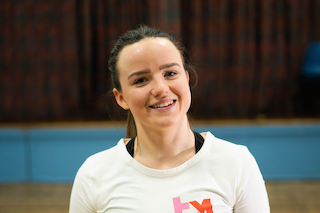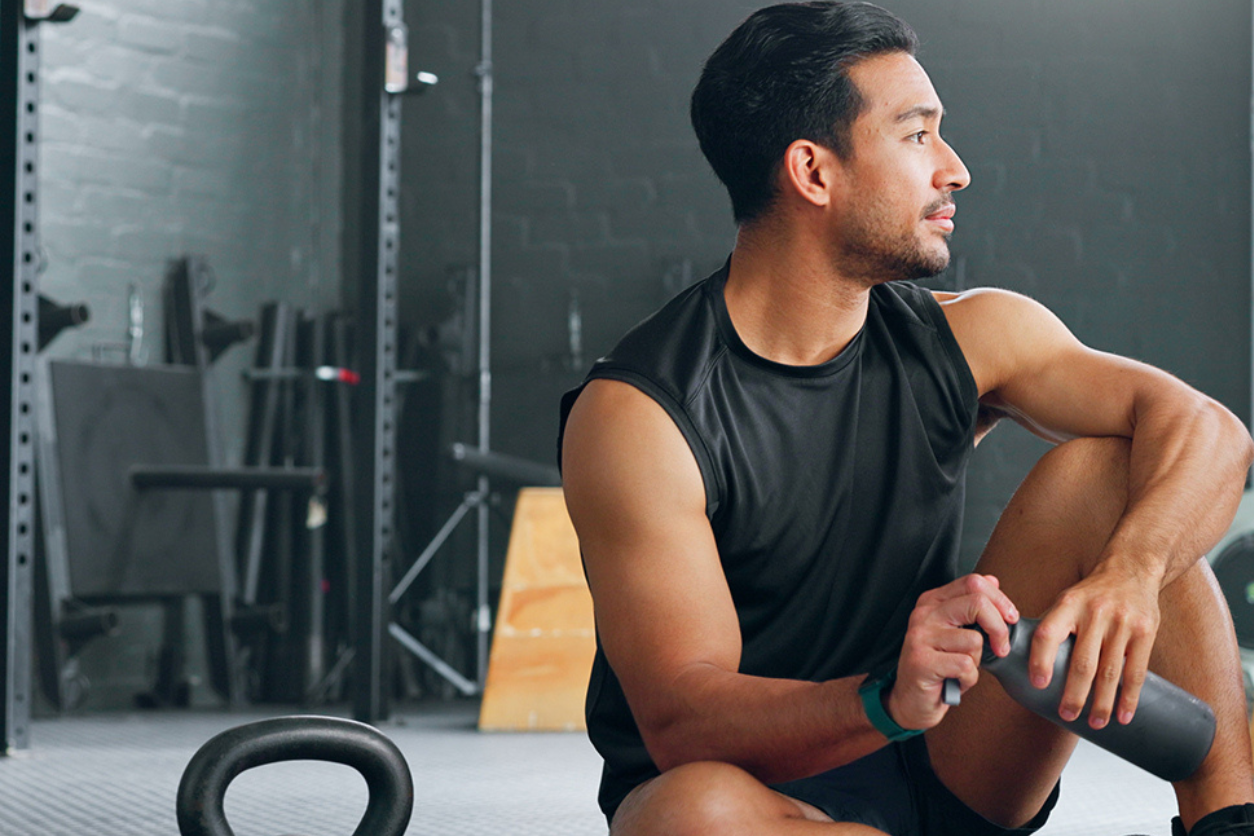It’s highly likely some of your clients will have experienced trauma at some point in their lives. Fiona Roberts looks at how trauma can affect clients in an exercising context and how you can deliver exercise provision that is safe and welcoming for all of your clients.
In 2017, the World Health Organization found that 70% of the world’s population surveyed has experienced trauma (1). The statistics in the UK paint the same stark picture, with one in five adults aged 18 to 74 years having experienced at least one form of child abuse (2) and one in four women experiencing domestic violence at some point in their lifetime (3). Although statistics show some demographics are disproportionately affected, trauma affects all genders, ages and ethnicities. With this reality, it is sadly extremely likely that some of our clients and those attending our exercise sessions are survivors of trauma.
Many of us may already have clients in mind when exploring this topic, with individuals often choosing to open up to their personal trainers as they build a relationship of trust. However, as trauma is often associated with feelings of shame and judgement, it may be that we will never know that some individuals we work with are struggling with the impact of trauma. Developing a trauma-informed approach throughout our practice enables us to deliver exercise provision that is safe and welcoming for all of our clients. Becoming more trauma informed also gives opportunities for our business to grow, welcoming those who have not yet accessed our services due to the barriers they face. An understanding of what trauma is and how it might be affecting our clients and future clients in an exercise context enables us to break down these barriers and be part of creating a fitness industry for all.
Developing an understanding of trauma and its impact has been transformative to me personally, to my work as a personal trainer and with theMovement Charity. theMovement Charity provides free trauma-informed exercise opportunities to women experiencing homelessness, domestic violence, sexual exploitation and correlated disadvantages, and I have the privilege of leading exercise sessions with service users, as well as developing and delivering a CPD course for all fitness professionals on a trauma-informed approach to exercise.
What is trauma?
Trauma is defined medically as when “the person experienced, witnessed or was confronted with an event or events that involved actual or threatened death or serious injury, or a threat to the physical integrity of self or others; the person’s response involved intense fear, helplessness, or horror … persistently re-experienced”(4). Examining trauma through a neurobiological lens is key to enabling us to understand trauma and how it affects us.
The role of our nervous system is to ensure our survival by detecting changes in our environment, deciding how best to respond to these changes and then actioning a response. When we experience something we perceive to be a threat, the decision of how best to respond is made by our autonomic nervous system, which is involuntary and unconscious. Dr Daniel Siegel’s hand model of the brain (5) can be helpful in understanding this. He uses the example of a hand in a fist shape to model the structure of the brain, with the thumb inside representing our survival, unconscious limbic system and the fingers over the top representing our conscious higher cognitive functioning part of the brain. When we experience something we perceive to be a threat, we ‘flip our lid’ and the ‘fingers’ part of the brain, the higher cognitive function, goes offline. This leaves the ‘thumb’ part of the brain, our unconscious limbic system, to make the decisions to ensure our survival. This is important as it enables us to act fast and not be interfered with or slowed down by our less efficient higher cognitive function.
We commonly refer to this fear response as our fight or flight response, but it can include other reactions such as freeze, fawn and flop. The fight and flight responses are the most well known of the fear responses and involve physically fighting or attempting to run away from the perceived threat. A freeze reaction is when individuals go tense, still and silent, for example, ‘playing dead’ to avoid being seen and eaten by a predator. A fawn response involves attempting to placate or befriend the threat, for example, giving an aggressive dog a toy or treat. The flop response differs from the others as it involves complete dissociation or shutdown, with individuals disconnecting from their body completely. Although we have no conscious control over which response we choose, often some responses carry more feelings of judgement or shame, for example, questioning why someone did not attempt to run away during a violent attack. As Khoudari states, “When it comes to our nervous system’s automatic responses to threat, many people think ‘fight’ or ‘flight’ is somehow more noble than ‘freeze’. We feel shame if we didn’t get away or fight off the bad guy. In truth, we have all evolved to do whatever saves our lives, and that is awesome.”(6)
If the response(s) our brain unconsciously selects to attempt to escape the threat is successful, our conscious higher cognitive functioning comes back online and we are able to process our experience and make sense of it. If, however, our unconscious attempt to escape the threat is unsuccessful, then we are immobilised and unable to complete the cycle and process our experience. This is how trauma occurs: “An inescapable stressful event that overwhelms people’s coping mechanisms”(7).
How can trauma affect us in an exercising context?
The impact of trauma is devastating and affects every area of our lives. Although the impact of trauma will look different for each person, there are a number of common symptoms that can result and can affect our experience of physical exercise.
One common symptom is experiencing triggers. As our higher cognitive function is unable to process the traumatic experience and store memories effectively, fragments of our sensory experience are paired with fear. This means certain sounds, items, smells or movements can result in a fear response. An exercise environment could be filled with potential triggers such as loud noises, rope-based equipment, hip-focused exercises or male-dominated spaces if the perpetrator(s) of the trauma was a male. Signs that someone is triggered may include individuals seeming disinterested, a sudden change in mood or a desire to leave. It is interesting to note these signs can be mistakenly perceived by us as fitness professionals as indicators a client does not like our session or is rude and ‘difficult’.
Another symptom is that when we are in a fear response, our interoception – that is our ability to perceive our internal environment – is turned off. Our nervous system does this because certain systems, such as your digestive and immune system, are an unnecessary use of energy when trying to escape an immediate threat. This also happens because interoception may interfere with our ability to escape a threat, for example, if we are noticing feelings of pain we may be less able to run away. Trauma causes us to spend a lot of time in a fear response and can therefore have a long-term impact on interoception – our ability to notice sensation in the body. In exercise environments, it is often assumed clients will be able to notice sensation in the body easily and this can create feelings of shame and alienation for survivors of trauma.
For many survivors, the threat that caused their trauma was a person or people, often involving an abuse of power and coercive control, for example, domestic violence. For the majority of survivors, the source of threat is also their key source of safety. This can have a long-term effect on a survivor’s interaction with power and ability to trust someone’s motives. As fitness professionals, we hold a lot of power in the spaces we teach. We are the experts in the room who know the plan for our sessions, tell our clients what to do and often control the majority of elements of the exercising experience. Without realising it, we can be replicating the unequal power dynamic a survivor of trauma has experienced previously.
The symptoms above are not an exclusive list and there are many other ways trauma can impact on our clients, but they offer a picture of the debilitating nature and scale of the impact of trauma and how that might look in the contexts we work.
Why become trauma informed?
Although the many ways trauma can impact on our clients may feel overwhelming, we have an incredible opportunity as fitness professionals to be part of their recovery from trauma and ability to access the many benefits of exercise despite the additional barriers they are facing. In addition to the many physical and mental health benefits we are all aware that physical activity has, studies show there are additional benefits specifically relating to a reduction in post-traumatic stress symptoms, such as hyperarousal, avoidance, sleep quality and hazardous alcohol use (8,9).
Judith Herman writes, “Safety always begins with the body. If a person does not feel safe in [their] body, [they do] not feel safe anywhere” (10). As a profession that works with people and their bodies, we have both the privilege and responsibility of being part of an individual’s recovery from trauma. It is important to note our role as fitness professionals is not to diagnose post-traumatic stress disorder or deliver medical treatment away from our scope of practice, but we can make small adjustments to our practice that create safe and positive experiences for survivors that form one piece of the puzzle to recovery from trauma.
Practical tips for developing a trauma informed approach to exercise
There is no set template or one-size-fits-all session plan for trauma-informed exercise provision. Every survivor will have experienced different trauma, have different triggers and different fear responses. There are, however, a number of principles we can easily incorporate into our practice to help survivors feel more safe and welcome in our exercise contexts. Below are five top tips to start incorporating a more trauma-informed approach to your teaching:
1. Be predictable
Creating an exercising environment that is consistent and predictable can help our clients to feel safe in our spaces. This may mean starting and ending our sessions the same way each time, always sharing the plan for the session at the start and keeping the timings of each exercise to the length we say we are going to. These simple steps can help build trust with our clients and create safety and security for survivors.
2. Be aware of potential triggers
As mentioned earlier, exercise spaces can be filled with potential triggers for survivors. Being aware of this means we can offer alternatives and opt outs where appropriate. This may look like introducing a new piece of equipment the week before you plan on incorporating it into a session, so your client can see it and have the opportunity to opt out of using it. It may mean that we explicitly offer alternative options to certain positions we know could be common triggers, such as lying down, hip-focused exercises or shutting our eyes. Physical touch can be a common trigger for survivors of trauma that involved non-consensual touch. It may be worth considering a no-touch or opt-in policy for physical adjustments to avoid triggering clients in this way.
3. Use invitational language
By adjusting our phrasing of instructions from “Do this” to “Perhaps you would like to”, “I invite you to” or “If you would like to”, we can begin to address the power dynamic imbalance of the instructor/client relationship and encourage bodily autonomy for our clients. This could look as simple as adding the following sentence at the beginning of every exercise session we lead: “Everything is optional throughout this session. You are the expert in your own body, so do listen to your body and do what feels right for you today.”
4. Think about what choices you can give to your clients
Another way we can strive to address the power imbalance is by thinking about what choices we can give to those attending our sessions, while still holding our professional boundaries and limitations. Some examples of choices we could give may be where individuals stand in the room, the lighting, the music and different modification options.
5. Encourage curiosity of sensation in the body
Exercise can be a positive opportunity for survivors to reconnect with their body after trauma. Encouraging opportunities to notice sensation within the body, for example, noticing muscles or feelings of stretch, can be a powerful moment of interoception for an individual. It is worth noting the possibility that clients might struggle to feel sensation in the body at all, so our language should reflect this possibility, for example, “You might feel this in …” instead of “You will feel this in …”or “You should feel this in …”.
By implementing these simple changes to our practice, we can together create a fitness industry that is welcoming to – and safe for – survivors of trauma and together restore every person’s right to exercise.
References
- Kessler R C et al. Trauma and PTSD in the WHO World Mental Health Surveys. European journal of psychotraumatology. 2017 Oct; 27:8
- Office for National Statistics. Child abuse extent and nature, England and Wales: year ending March 2019. [Internet] 2020 [cited 6.11.23] Available from: https://www.ons.gov.uk/peoplepopulationandcommunity/crimeandjustice/articles/childabuseextentandnatureenglandandwales/yearendingmarch2019
- Refuge. What is domestic abuse? The Facts. [Internet] 2023 [cited 6.11.23] Available from: https://refuge.org.uk/what-is-domestic-abuse/the-facts/#:~:text=Fact%3A%201%20in%204%20women,partner%20in%20England%20and%20Wales.
- National Library of Medicine. Substance Abuse Treatment: Addressing the Specific Needs of Women [Internet]. Rockville (MD): Substance Abuse and Mental Health Services Administration (US); 2009. Appendix E: DSM-IV-TR Criteria for Posttraumatic Stress Disorder. [cited 9.11.23] Available from: https://www.ncbi.nlm.nih.gov/books/NBK83241/?fbclid=IwAR27Y_K11IXxHkNXFz7fnd4OK06spbQKYYzBkpF2_8GJdaGHwpbsBWhe4v
- Dr Daniel Siegel. The Hand Model of the Brain, [Internet] 2023 [cited 9.11.23] Available from: https://drdansiegel.com/hand-model-of-the-brain/
- Khoudari, L. Lifting Heavy Things. United States: Tantor Media, Inc.; 2022.
- Van Der Kolk, B. The Body Keeps the Score. New York: Viking; 2014.
- Whitworth et al. Direct and indirect effects of exercise on posttraumatic stress disorder: A longitudinal study. Gen Hosp Psychiatry. 2017 Nov; 49:56-62.
- Whitworth et al. Feasibility of Resistance Exercise for Posttraumatic Stress and Anxiety Symptoms: A Randomized Controlled Pilot Study. J Trauma Stress. 2019 Dec; 32(6):977-984.
- Herman, J. Trauma and recovery. New York: Basic Book; 1992.
Watch Fiona’s webcast to find out more about developing a trauma informed approach to exercise and your clients.

Fiona Roberts
Fiona Roberts is a Level 3 personal trainer who has worked for many years supporting women experiencing multiple disadvantages in a number of roles. Her passions for social justice and fitness combined to create theMovement Charity, which exists to restore every woman’s right to exercise. As part of her role at theMovement, Fiona has developed and delivers a CPD course focused on equipping all fitness professionals with the knowledge and training to be more trauma informed in their practice.







